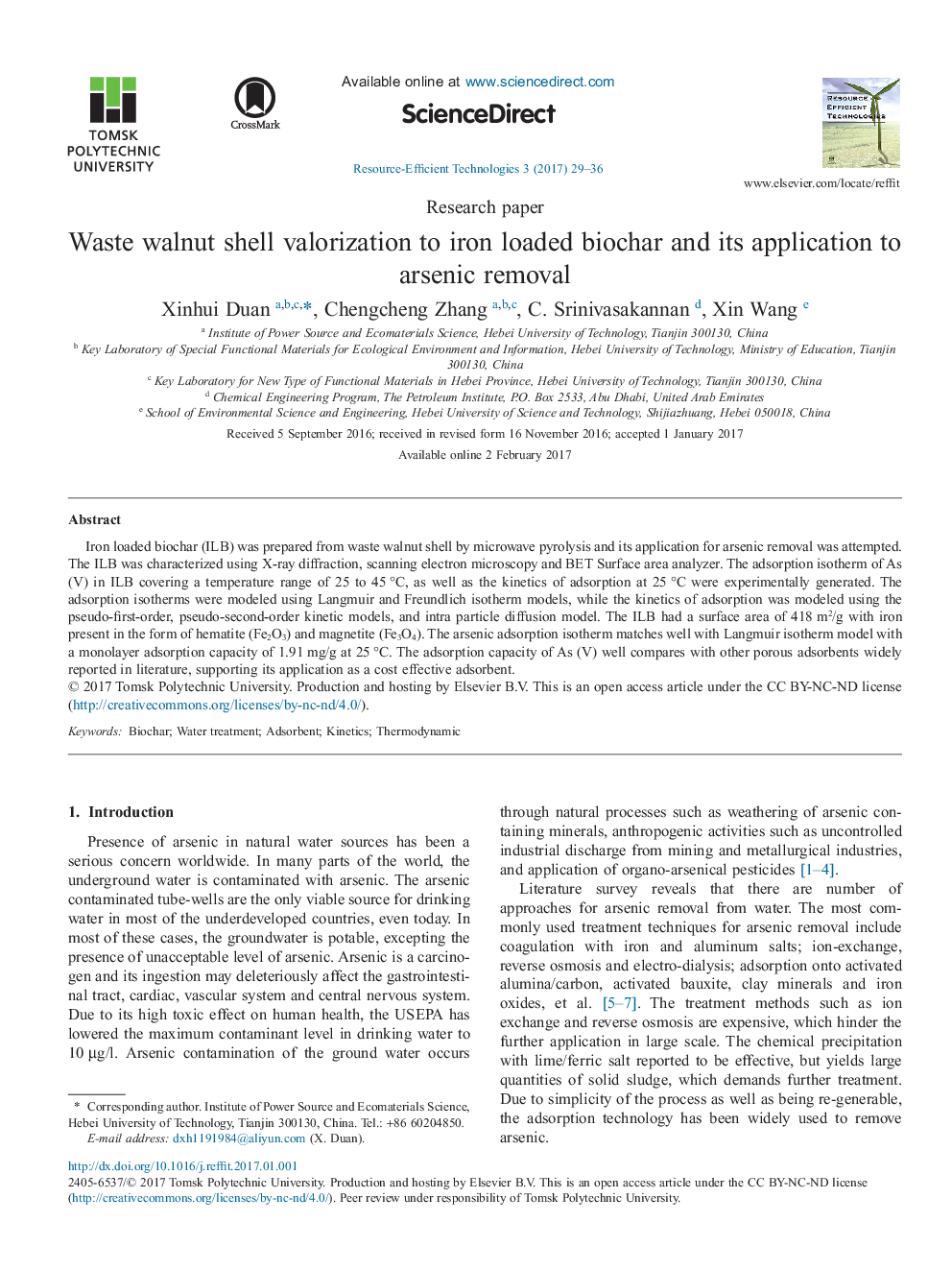| Article ID | Journal | Published Year | Pages | File Type |
|---|---|---|---|---|
| 5749729 | Resource-Efficient Technologies | 2017 | 8 Pages |
Iron loaded biochar (ILB) was prepared from waste walnut shell by microwave pyrolysis and its application for arsenic removal was attempted. The ILB was characterized using X-ray diffraction, scanning electron microscopy and BET Surface area analyzer. The adsorption isotherm of As (V) in ILB covering a temperature range of 25 to 45â°C, as well as the kinetics of adsorption at 25â°C were experimentally generated. The adsorption isotherms were modeled using Langmuir and Freundlich isotherm models, while the kinetics of adsorption was modeled using the pseudo-first-order, pseudo-second-order kinetic models, and intra particle diffusion model. The ILB had a surface area of 418âm2/g with iron present in the form of hematite (Fe2O3) and magnetite (Fe3O4). The arsenic adsorption isotherm matches well with Langmuir isotherm model with a monolayer adsorption capacity of 1.91âmg/g at 25â°C. The adsorption capacity of As (V) well compares with other porous adsorbents widely reported in literature, supporting its application as a cost effective adsorbent.
Graphical AbstractDownload high-res image (92KB)Download full-size imageThe iron loaded biochar was obtained by microwave assisted pyrolysis at microwave input power of 800âW for 20âmin from FeCl3 treated walnut shell, the resultant product has arsenic adsorption capacity of 1.91âmg/g at 25â°C.
